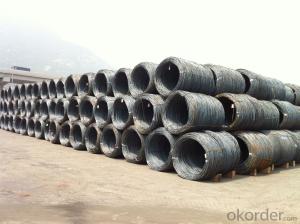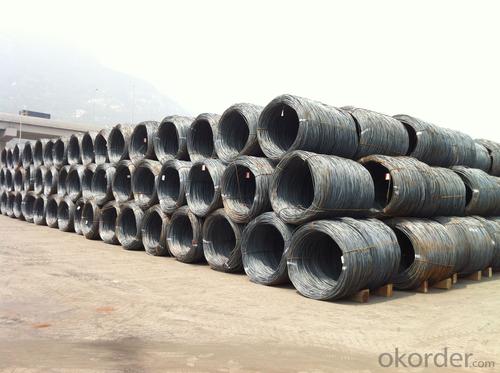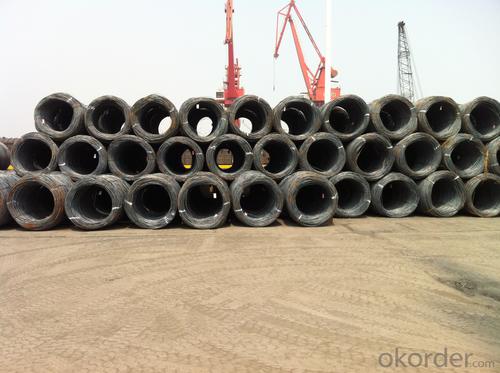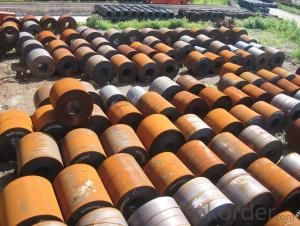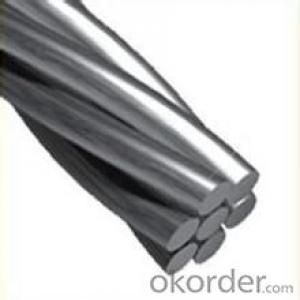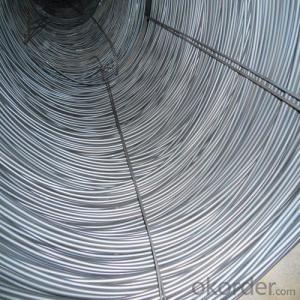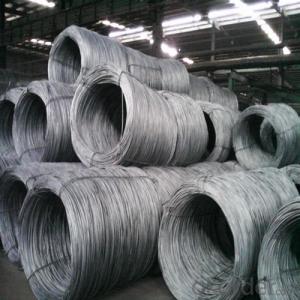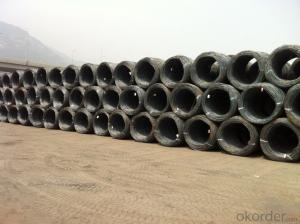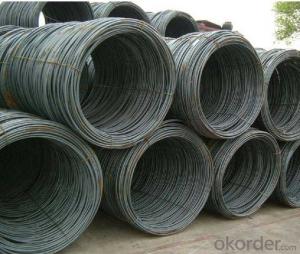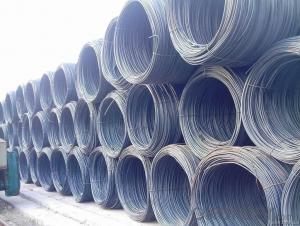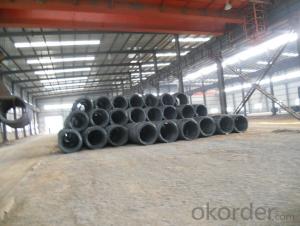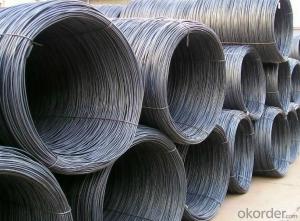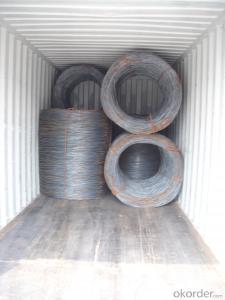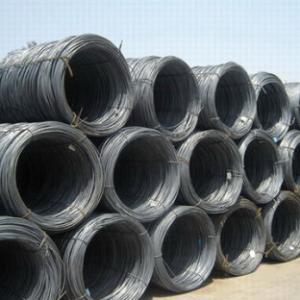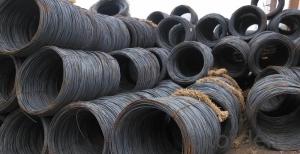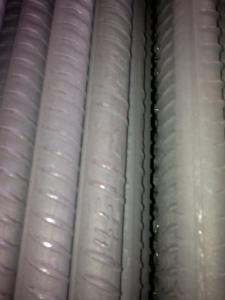American Standard Wire rods with high quality
- Loading Port:
- Tianjin
- Payment Terms:
- TT or LC
- Min Order Qty:
- 25 m.t.
- Supply Capability:
- 20000 m.t./month
OKorder Service Pledge
OKorder Financial Service
You Might Also Like
Product Description:
OKorder is offering SAE1008 Wire Rods at great prices with worldwide shipping. Our supplier is a world-class manufacturer of steel, with our products utilized the world over. OKorder annually supplies products to European, North American and Asian markets. We provide quotations within 24 hours of receiving an inquiry and guarantee competitive prices.
Product Applications:
SAE1008 Wire Rods are ideal for structural applications and are widely used in the construction of buildings and the manufacturing, industries.
Product Advantages:
OKorder's Wire Rods are durable, strong, and resist corrosion.
Main Product Features:
· Premium quality
· Prompt delivery & seaworthy packing (30 days after receiving deposit)
· Corrosion resistance
· Can be recycled and reused
· Mill test certification
· Professional Service
· Competitive pricing
Product Specifications:
Manufacture: Hot rolled
Grade: SAE1006 – SAE1008
Certificates: ISO, SGS, BV, CIQ
Length: 6m – 12m, as per customer request
Packaging: Export packing, nude packing, bundled
Grade | Chemical Composition (%) | |||||
C | Mn | S | P | Si | B | |
SAE1006B | 0.03~O.07 | 0.32max | 0.045max | 0.040max | 0.30max | 0.0008min |
Mechanical properties | ||||||
Yield strength(N/mm2) | Tensile strength(N/mm2) | Elongation (%) | ||||
250-280 | 350-380 | ≥32 | ||||
Grade | Chemical Composition (%) | |||||
C | Mn | S | P | Si | B | |
SAE1008B | 0.10max | 0.3~0.50 | 0.050max | 0.040 max | 0.15max | 0.0008 min |
Mechanical properties | ||||||
Yield strength(N/mm2) | Tensile strength(N/mm2) | Elongation (%) | ||||
≥195 | 315-430 | ≥30 | ||||
FAQ:
Q1: Why buy Materials & Equipment from OKorder.com?
A1: All products offered byOKorder.com are carefully selected from China's most reliable manufacturing enterprises. Through its ISO certifications, OKorder.com adheres to the highest standards and a commitment to supply chain safety and customer satisfaction.
Q2: How do we guarantee the quality of our products?
A2: We have established an advanced quality management system which conducts strict quality tests at every step, from raw materials to the final product. At the same time, we provide extensive follow-up service assurances as required.
Q3: What makes stainless steel stainless?
A3: Stainless steel must contain at least 10.5 % chromium. It is this element that reacts with the oxygen in the air to form a complex chrome-oxide surface layer that is invisible but strong enough to prevent further oxygen from "staining" (rusting) the surface. Higher levels of chromium and the addition of other alloying elements such as nickel and molybdenum enhance this surface layer and improve the corrosion resistance of the stainless material.
Images:
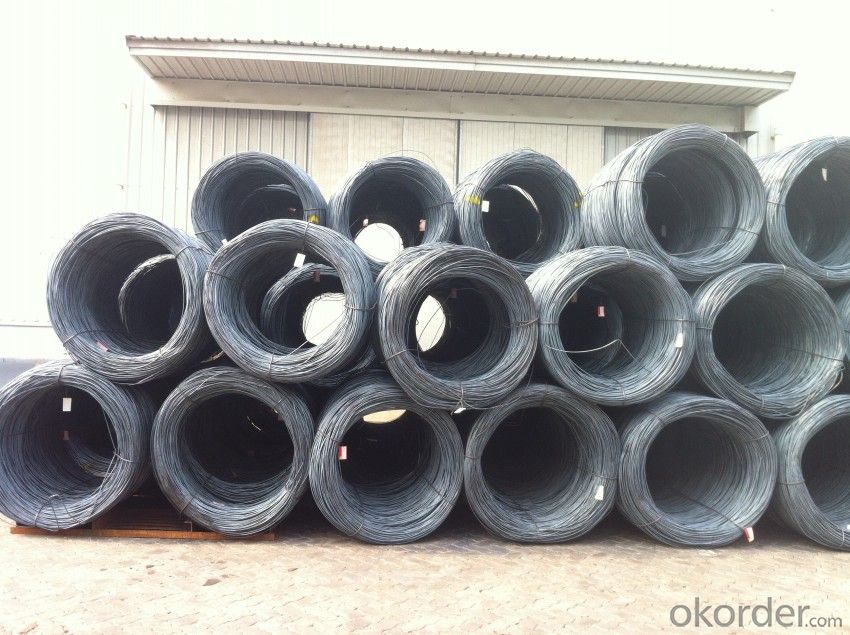
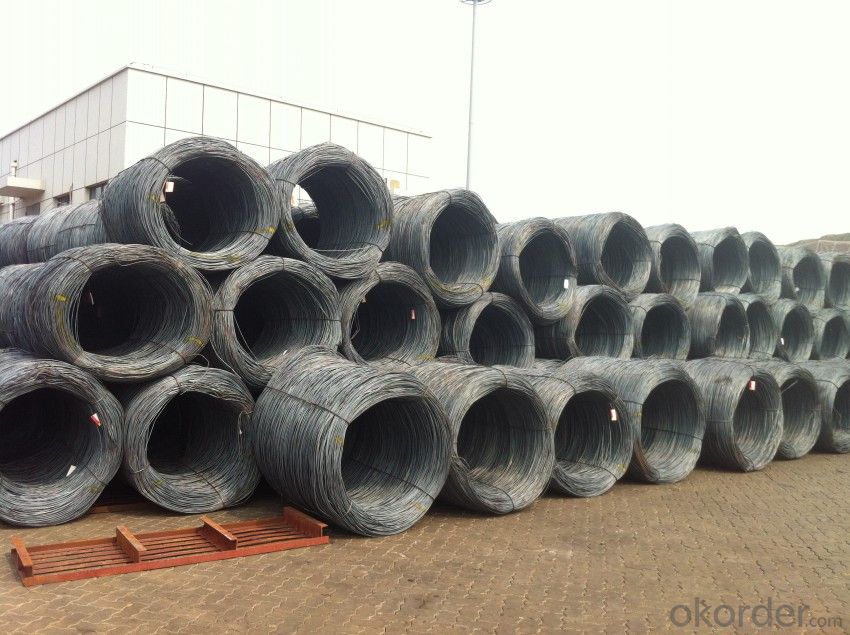
- Q: How is steel wire rod used in the manufacturing of wire bins?
- Steel wire rods are used in the manufacturing of wire bins as the primary material for creating the framework and structure of the bins. The wire rods are typically bent, shaped, and welded together to form the desired shape and size of the wire bins. Additionally, the strength and durability of steel wire rods make them suitable for withstanding heavy loads and providing stability to the wire bins.
- Q: What are the common defects that can occur during the processing of steel wire rod?
- During the processing of steel wire rod, various defects can arise, impacting the wire rod's properties and performance. Identifying and addressing these defects is of utmost importance. 1. Surface defects, such as scratches, pits, cracks, and scale, can significantly affect the wire rod's appearance and quality. These defects occur due to mishandling, improper rolling, or cooling processes. 2. Internal defects encompass inclusions, voids, and segregation. Inclusions refer to non-metallic particles or impurities weakening the wire rod. Voids are internal cavities that compromise its strength and structural integrity. Segregation involves uneven distribution of alloying elements, resulting in inconsistent mechanical properties along the wire rod's length. 3. Dimensional defects include variations in diameter, ovality, and straightness. These defects occur due to inadequate rolling, cooling, or handling processes, resulting in wire rods that fail to meet required specifications. 4. Decarburization is the loss of carbon from the wire rod's surface during heating or annealing processes. This loss diminishes its strength and hardness, impacting performance in applications requiring high strength. 5. Surface contamination can transpire during the processing of steel wire rod, resulting in foreign materials like oil, grease, dirt, or oxide scales. These contaminants adversely affect the wire rod's surface quality and may cause issues during subsequent processing or applications. To minimize these defects, implementing proper quality control measures throughout the production process is crucial. This involves using high-quality raw materials, employing effective rolling and heat treatment processes, and conducting regular inspections and testing to promptly identify and rectify any defects that arise.
- Q: How is steel wire rod used in the manufacturing of shelving systems?
- Steel wire rod is commonly used in the manufacturing of shelving systems as it provides strength, durability, and structural stability. It is used to create the frame and support structures of the shelving units, ensuring that they can withstand heavy loads and maintain their shape over time. Additionally, steel wire rods can be bent, twisted, and welded to create various shelving designs and configurations, allowing for customization and versatility in the shelving system.
- Q: How does steel wire rod compare to other materials for wire production?
- Steel wire rod is widely regarded as one of the superior materials for wire production due to its exceptional strength, durability, and versatility. Compared to other materials such as copper, aluminum, and brass, steel wire rod offers several distinct advantages. Firstly, steel wire rod exhibits superior tensile strength, making it highly resistant to breakage or deformation under heavy loads or extreme conditions. This strength is crucial in applications where wire is used for supporting structures or carrying heavy loads, ensuring the wire remains intact and reliable. Secondly, steel wire rod has excellent corrosion resistance properties, especially when compared to materials like copper or brass. This makes it an ideal choice for wire production in outdoor or high-moisture environments, where protection against rust and degradation is essential for the longevity and performance of the wire. Additionally, steel wire rod is known for its exceptional ductility, allowing it to be easily shaped and formed into various wire types and sizes. This flexibility makes it suitable for a wide range of applications, from electrical wiring to fencing, automotive components, and construction materials. Furthermore, steel wire rod is relatively cost-effective compared to materials like copper, making it a more economical choice for wire production without compromising on quality or performance. Its widespread availability and production efficiency contribute to its affordability. In summary, steel wire rod surpasses other materials in wire production due to its exceptional strength, corrosion resistance, ductility, and cost-effectiveness. Its versatile nature and reliability make it an ideal choice for a wide range of applications, making steel wire rod the preferred material in the wire industry.
- Q: How does the fatigue strength of steel wire rod vary with different wire drawing processes?
- The specific wire drawing process utilized can lead to varying fatigue strengths in steel wire rods. Wire drawing, a metalworking procedure that involves pulling a metal wire through a die to decrease its diameter and increase its length, is the key process. There are multiple wire drawing processes available, including wet drawing, dry drawing, and intermediate drawing, each having distinct characteristics and impacts on the fatigue strength of the steel wire rod. One factor that affects fatigue strength is the lubrication employed during the wire drawing process. Wet drawing entails immersing the wire rod in a lubricant to decrease friction and heat generation. This lubrication aids in minimizing surface defects and improving the fatigue strength of the wire rod. Conversely, dry drawing does not entail any lubrication, which can result in increased friction and heat generation, potentially leading to a decrease in fatigue strength. The reduction ratio, the ratio of the initial wire diameter to the final wire diameter, also plays a vital role. Higher reduction ratios can enhance the fatigue strength of the wire rod as the process aligns the grain structure and improves overall mechanical properties. However, excessively high reduction ratios can introduce internal defects or residual stresses, which can have a negative impact on fatigue strength. The subsequent heat treatment process after wire drawing can significantly influence fatigue strength as well. Heat treatment techniques, such as annealing or quenching, can enhance the microstructure of the wire rod and improve its fatigue strength. Annealing helps alleviate internal stresses and refine the grain structure, while quenching provides increased hardness and strength. These heat treatment processes can compensate for any potential reduction in fatigue strength caused by the wire drawing process. In conclusion, the fatigue strength of steel wire rod can vary depending on the wire drawing process employed. Factors such as lubrication, reduction ratio, and heat treatment techniques all have an impact on fatigue strength. It is crucial to carefully select the appropriate wire drawing process and associated parameters to optimize the fatigue strength of the steel wire rod for specific applications.
- Q: How is steel wire rod used in the production of wire shelves?
- Steel wire rod is used in the production of wire shelves as it serves as the raw material for making the wire mesh that forms the structure of the shelves. The wire rod is first processed and shaped into the desired wire thickness and diameter, and then it is welded or woven together to create the mesh panels that make up the shelves. This sturdy and durable material ensures the strength and stability of wire shelves, allowing them to hold and display various items efficiently.
- Q: What are the common customer requirements for steel wire rod?
- Some common customer requirements for steel wire rod include high tensile strength, consistent quality, good surface finish, precise dimensional accuracy, and compliance with industry standards and specifications. Customers often look for wire rod that is suitable for various applications such as automotive parts, construction materials, and wire products. Additionally, timely delivery, competitive pricing, and excellent customer service are also important considerations for customers.
- Q: What are the types of surface coatings applied to steel wire rod?
- There are several types of surface coatings that can be applied to steel wire rod, including zinc coatings, galvanized coatings, epoxy coatings, and polymer coatings.
- Q: Can steel wire rod be used in high-temperature applications?
- Steel wire rod can be used in high-temperature applications, but it is important to consider the specific type of steel used and the temperatures involved. Certain grades of steel, such as stainless steel or heat-resistant alloys, are specifically designed to withstand high temperatures without significant loss of strength or structural integrity. These types of steel are often used in industries such as aerospace, automotive, and power generation, where exposure to high temperatures is common. However, not all steel wire rods are suitable for high-temperature applications. Some lower-grade steels may experience a decrease in mechanical properties, such as tensile strength, ductility, and corrosion resistance, when exposed to elevated temperatures. It is crucial to consult the manufacturer's specifications or seek expert advice to determine if a particular steel wire rod is appropriate for the intended high-temperature environment. Additionally, other factors such as the operating conditions, duration of exposure, and presence of other corrosive elements or chemicals should be taken into account when considering the use of steel wire rod in high-temperature applications. Regular monitoring and maintenance may be necessary to ensure the continued performance and safety of the steel wire rod in such environments.
- Q: What are the different types of steel wire rod surface inspection techniques?
- There are several types of steel wire rod surface inspection techniques, including visual inspection, magnetic particle inspection, ultrasonic testing, eddy current testing, and dye penetrant inspection.
Send your message to us
American Standard Wire rods with high quality
- Loading Port:
- Tianjin
- Payment Terms:
- TT or LC
- Min Order Qty:
- 25 m.t.
- Supply Capability:
- 20000 m.t./month
OKorder Service Pledge
OKorder Financial Service
Similar products
Hot products
Hot Searches
Related keywords
